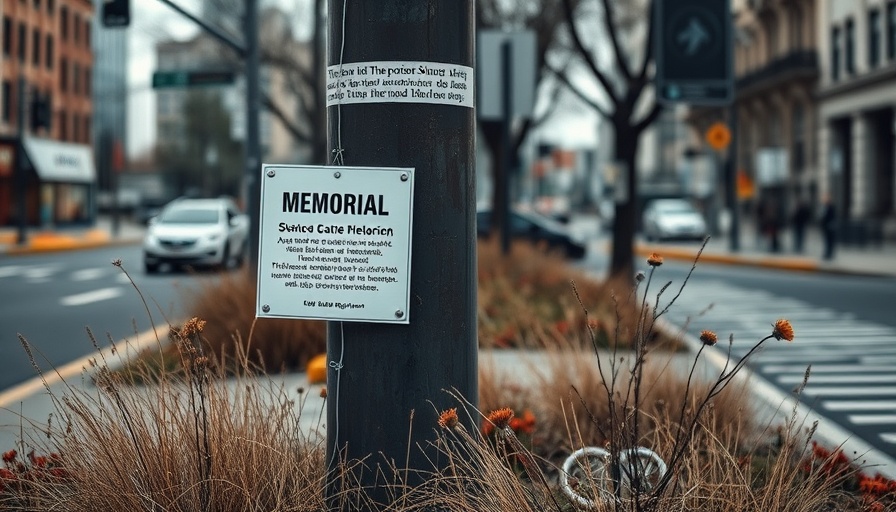
Confronting the Consequences of Speeding on Claremont Avenue
In the wake of a tragic incident that claimed the life of 67-year-old Roderick Nared, concerns surrounding pedestrian safety on Claremont Avenue have surged to the forefront of local discussion. The recent fatality has served as a grim reminder of the urgent need for enhanced safety measures along this key thoroughfare in Berkeley.
Understanding the Community's Call for Action
Local residents have expressed their frustration regarding the street’s design and speed limits, often describing Claremont Avenue as a “dangerous mini-freeway.” With a speed limit of 25 mph and a layout that encourages fast driving, it is essential that city officials prioritize the safety of all users, including pedestrians and cyclists. Safety advocates are emphasizing the need for a redesign that narrows driving lanes to create a more pedestrian-friendly environment.
Exploring Options for Immediate Improvements
In response to the community's concerns, Berkeley's government is embarking on a study to explore short- and long-term safety upgrades. City Councilmember Mark Humbert acknowledged that there are immediate opportunities for “quick-build” enhancements—changes that can be implemented swiftly to provide a safer corridor while awaiting more thorough renovations slated for the future. “We need to act now,” he stated, highlighting the pressing need for changes before the complete repaving plan is set to begin in 2027.
The Financial Landscape for Safety Fund Initiatives
Funding for these improvements could largely come from Measure FF, a community-approved parcel tax directed toward street paving and safety upgrades. Expected to generate approximately $15 million annually, this measure aligns with the city’s commitment to pedestrian safety and encourages further exploration of design solutions that prioritize both safety and accessibility.
Aligning with Vision Zero Goals
Organizations like Walk Bike Berkeley have urged the city to adhere to its “Vision Zero” goal of eliminating severe and fatal collisions by 2028. The loss of Mr. Nared has energized advocacy efforts, reminding city officials and residents alike that pedestrian safety must be treated as a fundamental priority in urban planning.
Engaging the Community in the Redesign Process
As Berkeley moves forward, community input will be invaluable in crafting solutions that truly reflect the needs and desires of local residents. Public forums and discussions can create a platform for sharing ideas and experiences, ensuring that the redesigned Claremont Avenue serves everyone who uses it—from pedestrians to cyclists to motorists.
The Path Forward: Collaborative Actions
As decisions about the future of Claremont Avenue take shape, community advocacy will play a vital role. Residents are encouraged to participate in upcoming meetings and share their suggestions. By coming together, the community can contribute to a vision of a safer and more inviting avenue.
In conclusion, while the loss of Roderick Nared is a heartbreaking event, it can catalyze a significant and necessary shift towards proactive safety measures on Claremont Avenue. By advocating for immediate changes and engaging in open dialogue, the community may unveil a way forward that honors Mr. Nared’s memory and enriches the lives of all Berkeleyans.
 Add Row
Add Row  Add
Add 




Write A Comment